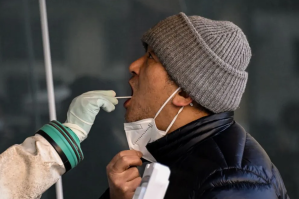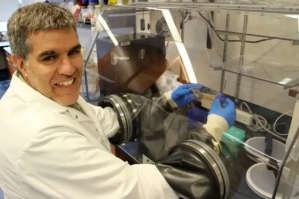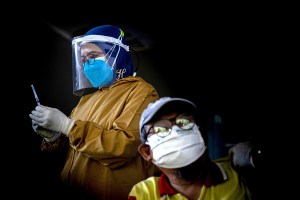Are we a lot closer to achieving herd immunity with COVID-19 than has been made out? It is a question which has been asked many times, not least because the disease has a tendency to fizzle out in communities where around a fifth of people have been infected — as has been observed in New York, London the Brazilian city of Manaus and the Diamond Princess cruise ship. The British government’s switch away from a herd immunity strategy to one of full lockdown in March, on the other hand, was based partly on the assumption that we would need at least 60 percent of people to be infected before herd immunity was achieved.
Now, a paper in the BMJ suggests that we may have seriously been underestimating the number of people who have been exposed to the virus SARS-CoV-2 and who as a result may have gained some degree of immunity to the infection. A team led by the Biostatistics Unit at Cambridge University’s School of Clinical Medicine argues that antibody tests — used to determine if someone has had the disease in the past, as opposed to having it at the present — may have been undercounting in several ways. Firstly, they are not sensitive enough and miss out mild cases where people have overcome the disease by producing low levels of antibodies. The tests have been calibrated, they say, on more severe cases of COVID-19, where people produced large quantities of antibodies.
Secondly, the team argues, most antibody tests only look for two types of antibody — Immunoglobulin G (IgG) and Immunoglobulin M (IgM), which are known to be the dominant antibodies in the body’s blood-borne immune system. They fail, however, to look out for another antibody, IgA, which often acts as the body’s first line of defense against viruses and bacteria. Where tests have looked for IgA they have suggested a significantly higher level of exposure to SARS-CoV-2 than tests which measured only for IgG and IgM. In a sample of 1,862 people in Luxembourg, for example, IgG antibodies were found in only 1.9 percent of the sample. IgA antibodies, by contrast, were found in 11 percent. In Ischgl, the Austrian ski resort which is believed to be one of the main seats of the epidemic in Europe, antibody tests looked for IgG and IgA — and found that 42.4 percent of the population tested positive, a level far higher than has been measured elsewhere using only IgG and IgM tests.
In June a paper by Sweden’s Karolinska Institute suggested another way in which antibody tests may have been undercounting the number of people who have had the virus. They found that many people showed an immunological response to SARS-CoV-2 in their T cells — another part of the body’s immune system — without necessarily showing antibodies in their blood.
***
Get a digital subscription to The Spectator.
Try a month free, then just $3.99 a month
***
The hypothesis that we have been undercounting the number of people who have been exposed to SARS-CoV-2 is based on limited evidence, but it demands much greater effort be put into trying to establish just how many people may now have some degree of immunity to it. We may be fearing a ‘second wave’ which our immune systems already have well in hand.
This article was originally published on The Spectator’s UK website.


















